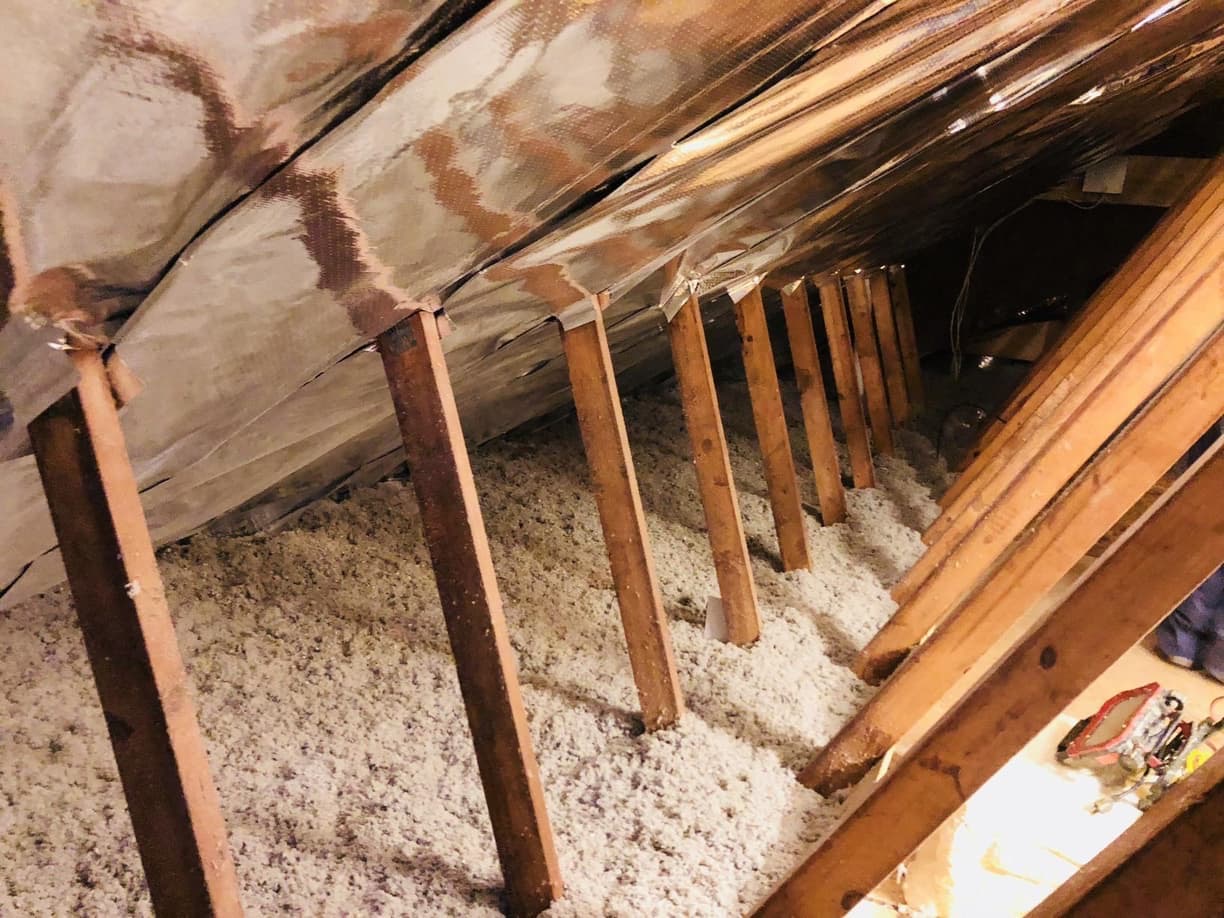

Articles
How To Tell If An Attic Is Properly Insulated
Modified: February 23, 2024
Learn how to determine if your attic has proper insulation with these helpful articles. Stay warm and save energy in your home.
(Many of the links in this article redirect to a specific reviewed product. Your purchase of these products through affiliate links helps to generate commission for Storables.com, at no extra cost. Learn more)
Introduction
Welcome to this comprehensive guide on how to tell if an attic is properly insulated. Adequate insulation in the attic plays a vital role in maintaining a comfortable and energy-efficient home. Insufficient insulation can result in significant energy loss, increased utility bills, and reduced indoor comfort. Therefore, it’s important to understand the signs of both insufficient and sufficient insulation in your attic, as well as how to check and improve its insulation levels.
Having knowledge about proper attic insulation is especially important because it is often overlooked by homeowners. Many people are unaware of the impact that insulation can have on the energy efficiency and overall comfort of their homes. By understanding the signs of insufficient or worn-out insulation, you can take proactive steps to ensure that your home is properly insulated, leading to lower energy costs and a more comfortable living environment.
Insufficient attic insulation can lead to various problems. In colder months, heat can escape through the attic, causing drafts, cold spots, and an overall chilly atmosphere inside the house. During the summer, inadequate insulation can allow heat to seep into the home, making it harder to cool and resulting in increased energy usage from air conditioning. Additionally, poor insulation is often associated with excessive moisture buildup, leading to issues like mold growth and structural damage.
On the other hand, a properly insulated attic can offer numerous benefits. It helps maintain a consistent indoor temperature, reducing the strain on heating and cooling systems. Proper insulation also ensures a comfortable living environment and minimizes the risk of condensation and moisture-related problems. Moreover, it can contribute to lower energy bills, as less energy is required to heat or cool the home when insulation is effective.
In this guide, we will explore the signs of both insufficient and sufficient attic insulation, provide guidance on how to check the insulation levels, discuss common types of insulation, highlight the importance of proper attic insulation, and offer cost-effective solutions to upgrade your insulation. Whether you choose to assess the insulation yourself or seek professional assistance, this guide will equip you with the knowledge you need to ensure your attic is properly insulated.
Key Takeaways:
- Recognizing the signs of insufficient and sufficient attic insulation, along with understanding the importance of proper insulation, empowers homeowners to take proactive steps in maintaining a comfortable and energy-efficient home.
- Whether through cost-effective DIY solutions or professional assessments, ensuring adequate attic insulation offers benefits such as energy efficiency, comfort, and long-term cost savings, making it a worthwhile investment for homeowners.
Signs of Insufficient Attic Insulation
Insufficient attic insulation can have several telltale signs. It’s important to be aware of these signs so that you can take action to address any insulation issues. Here are some common signs that your attic may be lacking adequate insulation:
- Temperature variations: If you notice significant temperature differences between your attic and the rest of your home, it could be an indication of insufficient insulation. In the winter, the attic may feel much colder than the rooms below, while in the summer, the attic may become excessively hot.
- High energy bills: Poor insulation leads to increased energy consumption as your heating and cooling systems have to work harder to compensate for the temperature fluctuations. If you notice a sudden spike in your energy bills, it could be a sign that your attic insulation is inadequate.
- Drafts and cold spots: If you feel drafts or notice cold spots in certain areas of your home, particularly near the ceiling, it’s likely that heat is being lost through the attic due to insufficient insulation.
- Visible insulation gaps: Take a look inside your attic and check for any visible gaps or areas where insulation is missing. These gaps can allow heat to escape or enter your home, reducing the effectiveness of your insulation.
- Ice dams: During winter, ice dams may form on the edge of your roof due to inadequate insulation. This occurs when warm air from the attic melts snow on the roof, which then refreezes at the eaves, causing icicles and potential water damage.
- Mold or moisture issues: Insufficient insulation can lead to moisture buildup in the attic, promoting mold growth and potentially causing damage to the structure of your home. If you notice any signs of mold or excessive moisture in your attic, it could be due to poor insulation.
- Pest infestations: Inadequate insulation can create entry points for pests such as rodents and insects. If you notice signs of pest activity in your attic, it may be a result of insulation gaps that provide easy access for these unwanted visitors.
If you observe any of these signs in your attic, it’s essential to address the insulation issues as soon as possible to improve energy efficiency, prevent damage, and enhance the comfort of your home. In the next section, we will discuss the signs of sufficient attic insulation, allowing you to compare and determine if your insulation needs upgrading.
Signs of Sufficient Attic Insulation
If your attic has sufficient insulation, you will notice the following signs:
- Consistent temperatures: Adequate insulation helps maintain a consistent temperature throughout your home. You won’t experience extreme heat or cold spots, and the temperature in your attic will be in line with the rest of your living spaces.
- Lower energy bills: With proper insulation, your heating and cooling systems won’t have to work overtime to maintain a comfortable temperature. This results in lower energy usage and reduced monthly utility bills.
- No noticeable drafts: Sufficient insulation acts as a barrier against drafts, so you won’t feel any uncomfortable drafts coming from your attic or near your ceilings. Rooms will feel consistently comfortable throughout the year.
- Mold and moisture control: Proper attic insulation helps regulate moisture levels, preventing condensation build-up and reducing the risk of mold growth. You won’t experience any musty odors or see any signs of moisture damage in the attic.
- No ice dams: When your attic insulation is adequate, the formation of ice dams on your roof is less likely. This is because the insulation helps to keep the attic space cooler, preventing the snow on your roof from melting and refreezing along the eaves.
- Energy-efficient home: Sufficient attic insulation acts as a thermal barrier, reducing heat transfer between the attic and the rest of your home. This creates an energy-efficient environment, keeping your home warmer in the winter and cooler in the summer.
- No signs of pest infestations: With proper insulation, there are fewer entry points for pests like rodents and insects. You won’t have to worry about unwanted visitors making their way into your home through the attic.
If you notice these signs in your attic, it suggests that your insulation is doing its job effectively. However, it’s important to remember that insulation can degrade over time, so regular maintenance and inspection are necessary to ensure it continues to provide optimal performance. Now that you are familiar with the signs of both insufficient and sufficient attic insulation, let’s move on to the next section where we’ll discuss how to check the insulation level in your attic.
Checking Attic Insulation Level
To determine the insulation level in your attic, you can perform a simple visual inspection and measurement. Here’s how to check the attic insulation level:
- Wear protective clothing: Before entering the attic, make sure to wear long sleeves, pants, gloves, and a dust mask to protect yourself from any potential irritants.
- Locate the attic access point: Find the access point to your attic, typically a hatch or pull-down ladder, and make any necessary preparations to safely access the space, such as using a ladder if needed.
- Bring a flashlight: Attics are often dark, so it’s essential to have a reliable flashlight to illuminate the area and inspect the insulation thoroughly.
- Check the existing insulation: Once in the attic, carefully examine the insulation material. The most common types include fiberglass batts or rolls, cellulose loose-fill insulation, and spray foam insulation. Note the thickness and condition of the insulation.
- Measure the depth: Use a tape measure or ruler to measure the depth or thickness of the insulation. It’s important to measure the insulation’s thickness in several areas to obtain an average value.
- Consult insulation requirements: Research the recommended insulation levels for your region and climate zone. The recommended R-value (which measures the insulation’s thermal resistance) may vary depending on factors such as the location and the type of insulation material.
- Compare with recommended levels: Compare the measured insulation depth with the recommended levels for your area. If the thickness falls below the recommended R-value, it may be an indication that your attic insulation is insufficient.
Keep in mind that insulation requirements differ based on your location and climate, so it’s crucial to consult local building codes and guidelines to ensure your insulation meets the recommended standards.
If you find that your attic insulation is below the recommended level, it may be time to consider upgrading or adding insulation. In the next section, we will discuss the common types of attic insulation to help you make informed decisions about improving your insulation.
Common Types of Attic Insulation
When it comes to insulating your attic, there are several common types of insulation materials to choose from. Each type has its own advantages, and the best option for your home will depend on factors such as budget, insulation needs, and personal preference. Here are some of the most common types of attic insulation:
- Fiberglass Batts or Rolls: Fiberglass insulation is made from tiny glass fibers. It comes in pre-cut batts or long rolls and is relatively easy to install. Fiberglass insulation is affordable and offers good thermal resistance. However, it requires careful handling to avoid skin irritation from the glass fibers.
- Cellulose Loose-Fill Insulation: Cellulose insulation is made from recycled paper and treated to be fire-resistant. It can be blown or poured into the attic, filling gaps and providing excellent coverage. Cellulose insulation is environmentally friendly and offers better performance in reducing air movement and noise compared to fiberglass. It’s important to note that professional installation is often recommended for cellulose insulation.
- Spray Foam Insulation: Spray foam insulation is a popular choice for attics due to its ability to seal gaps and create an airtight barrier. It is available in two types: open-cell and closed-cell. Open-cell insulation is less expensive but has lower R-value, while closed-cell offers higher R-value and acts as a moisture barrier. Spray foam insulation provides excellent insulation and can improve energy efficiency, but professional installation is typically required.
- Rigid Foam Insulation: Rigid foam insulation is rigid panels made from polyurethane or polystyrene. It offers high thermal resistance and can be an effective choice for attics. Rigid foam insulation can be used alone or in combination with other insulation materials to achieve the desired insulation level. It’s more expensive than other options but provides excellent insulation properties and can help control moisture.
- Reflective Insulation: Reflective insulation consists of a reflective material, such as aluminum foil, that reflects radiant heat. It is typically installed between attic joists or on the underside of the roof rafters. Reflective insulation is best suited for hot climates where the primary source of heat gain is through the roof. It’s important to note that reflective insulation should always be combined with other insulation materials to provide comprehensive insulation coverage.
These are just a few of the commonly used attic insulation options. Each type of insulation has its own unique benefits and considerations. It’s recommended to consult with a professional insulation contractor or conduct thorough research to determine the most suitable insulation material for your attic.
Remember, proper installation is essential to achieve the desired insulation performance. If you’re unsure about installing insulation yourself, it’s best to seek assistance from a professional insulation contractor who can ensure proper installation and optimal energy efficiency for your home.
In the next section, we will discuss the importance of proper attic insulation and the benefits it provides for homeowners.
Read more: How To Properly Install Insulation
Importance of Proper Attic Insulation
Proper attic insulation is crucial for a variety of reasons. It not only helps maintain a comfortable living environment but also offers several benefits for homeowners. Here are some key reasons why proper attic insulation is important:
- Energy Efficiency: Adequate attic insulation plays a significant role in energy efficiency. It acts as a barrier against heat transfer, helping to keep your home warm in the winter and cool in the summer. This reduces the reliance on heating and cooling systems, resulting in lower energy consumption and reduced utility bills.
- Comfort: Insufficient insulation can lead to temperature imbalances, drafts, and discomfort in your home. Proper attic insulation helps maintain a consistent temperature throughout the living space, ensuring a comfortable environment all year round. It eliminates hot and cold spots, allowing you to enjoy every corner of your home without fluctuations in temperature.
- Noise Reduction: Attic insulation not only provides thermal insulation but also helps reduce noise transmission. It acts as a sound barrier, absorbing and reducing noise traveling between floors and from outside sources. This is especially beneficial for homes located in noisy areas or for those who desire a quieter indoor environment.
- Moisture Control: Proper attic insulation helps control moisture levels, minimizing the risk of condensation and moisture-related issues. It creates a barrier that prevents warm, moist air from infiltrating the attic and causing problems like mold growth, rotting of materials, and structural damage. By maintaining balanced moisture levels, insulation promotes a healthier and more durable home.
- Environmentally Friendly: An energy-efficient home translates to a reduced carbon footprint. By reducing energy consumption through proper attic insulation, you contribute to environmental conservation and sustainability. Lower energy usage means fewer greenhouse gas emissions, helping to combat climate change and protect the planet.
- Long-Term Cost Savings: Investing in proper attic insulation may require an upfront cost, but it offers long-term savings. Reduced energy bills, improved energy efficiency, and lower maintenance costs due to moisture control all contribute to significant savings over time. The return on investment can make proper attic insulation a financially wise decision for homeowners.
Proper attic insulation is an investment that brings numerous benefits. It improves energy efficiency, enhances home comfort, reduces noise, protects against humidity and moisture-related issues, benefits the environment, and saves homeowners money. It’s clear that sufficient attic insulation is essential to create a healthy, comfortable, and cost-effective living environment.
In the next section, we will explore cost-effective insulation solutions that can help upgrade your attic insulation and maximize its benefits.
Check the depth of the insulation in the attic. It should be at least 10-14 inches deep. Also, look for any gaps or areas where insulation is missing.
Cost-Effective Insulation Solutions
Upgrading your attic insulation doesn’t have to break the bank. There are several cost-effective insulation solutions that can improve your insulation’s effectiveness without costing you a fortune. Here are some cost-effective ways to enhance your attic insulation:
- Add Insulation: One of the simplest and most cost-effective solutions is to add more insulation to your existing attic. If your insulation level is below the recommended R-value for your area, adding additional insulation can significantly improve its effectiveness. You can install roll-out fiberglass batts, blown-in cellulose, or hire a professional to handle the installation for you.
- Seal Air Leaks: Air leaks can undermine the effectiveness of your insulation. Identify and seal any gaps, cracks, or holes in your attic, particularly around pipes, electrical wires, and vents. Use caulking, weatherstripping, or expanding foam to seal these leaks and prevent outside air from entering or conditioned air from escaping.
- Insulate Attic Access Points: Don’t forget to insulate your attic access points, such as hatches or pull-down stairs. Use weatherstripping or an insulated cover to minimize heat transfer through these openings.
- Install Insulated Attic Door Cover: If your attic has a door leading to a conditioned living space, consider installing an insulated door cover or tent. This helps minimize heat loss or gain through the attic door and provides additional insulation in that area.
- Upgrade to Reflective Insulation: Reflective insulation, such as aluminum foil, can be an affordable option to enhance attic insulation. It reflects heat rather than absorbing it, helping to keep your attic and home cooler. Install it in addition to other insulation materials for optimal thermal performance.
- Properly Ventilate the Attic: Good attic ventilation is essential for maintaining proper moisture levels and preventing the buildup of heat. Install attic vents to allow air circulation and reduce the risk of moisture-related issues, such as mold growth and rotting of materials. Proper ventilation can enhance the efficiency and lifespan of your insulation.
- Consider DIY Installation: If you’re comfortable with basic DIY projects and have the necessary safety equipment, you may be able to handle the insulation installation yourself. This can save on labor costs, but be sure to research and follow proper installation techniques and safety guidelines.
Remember, while these cost-effective solutions can improve your attic insulation, it’s important to consider the specific needs and requirements of your home. Consulting with a professional insulation contractor can provide valuable insights and ensure that you choose the most appropriate insulation solutions for your attic.
By implementing these cost-effective insulation solutions, you can enhance the energy efficiency of your home, improve comfort levels, and reduce energy bills. In the next section, we will discuss professional insulation assessment options for those who prefer expert guidance.
Professional Insulation Assessment Options
If you’re unsure about the insulation condition in your attic or want expert guidance, there are professional insulation assessment options available. These professionals can assess your attic insulation and provide recommendations to improve its effectiveness. Here are some professional insulation assessment options to consider:
- Insulation Contractors: Hiring a reputable insulation contractor can provide a comprehensive assessment of your attic insulation. They will inspect the insulation material, measure its depth, and evaluate its condition. Insulation contractors can also identify areas of insulation gaps or air leaks and provide recommendations for improving insulation levels.
- Energy Auditors: Energy auditors specialize in assessing the energy efficiency of homes. They can conduct a detailed inspection of your entire home, including the attic, to identify areas where energy efficiency can be improved. Energy auditors use advanced tools like thermal imaging cameras and blower door tests to detect insulation deficiencies and air leaks. They will provide a thorough analysis of your attic insulation and recommend the most effective solutions for improving energy efficiency.
- Home Inspectors: If you’re planning to buy or sell a home, a home inspector can include an assessment of the attic insulation as part of their inspection process. While home inspectors may not be insulation specialists, they can still provide valuable insights on the overall condition and adequacy of the insulation in the attic.
- Utility Company Assessments: Some utility companies offer energy efficiency programs that include insulation assessments. They may provide energy audits or assessments at a reduced cost or even for free. Contact your local utility company to inquire about any available insulation assessment programs.
Professional insulation assessments are beneficial if you want a thorough and expert evaluation of your attic insulation. They can provide you with precise information on the current insulation’s effectiveness and identify any areas that need improvement. With their recommendations, you can make informed decisions on how to upgrade and enhance your attic insulation.
It’s important to choose reputable professionals who have expertise in insulation assessment and installation. Seek recommendations from trusted sources and ensure that the professionals are licensed, insured, and experienced. You can also ask for references or read reviews to gauge their reputation and customer satisfaction.
Whether you decide to assess the insulation yourself or hire professionals, taking the time to evaluate your attic insulation is a worthwhile investment. It can help you identify areas for improvement, increase energy efficiency, and enhance the overall comfort and value of your home.
In the next section, we will provide some do-it-yourself (DIY) tips for improving and maintaining your attic insulation.
DIY Attic Insulation Tips
If you’re up for a do-it-yourself (DIY) project, there are several tips you can follow to improve and maintain your attic insulation. These DIY tips can help enhance the effectiveness of your insulation and contribute to a comfortable and energy-efficient home. Here are some DIY attic insulation tips:
- Seal Air Leaks: Use weatherstripping or caulking to seal any gaps, cracks, or holes in your attic. Focus on areas where pipes, wires, and vents penetrate the attic walls or ceiling. This prevents warm air from escaping in the winter and cool air from leaking out in the summer, improving energy efficiency.
- Insulate Attic Access Points: Utilize insulation materials, such as foam board or batt insulation, to insulate your attic access points, such as hatches or pull-down stairs. This helps reduce heat transfer through these openings and enhances the overall insulating quality of your attic.
- Add Insulation: If you determine that your current insulation is insufficient, you can add additional insulation to boost its effectiveness. Fiberglass batts or rolls and blown-in cellulose insulation are popular DIY-friendly options for adding insulation in the attic. Follow manufacturer guidelines and wear proper protective gear during installation.
- Prevent Moisture: Ensure proper ventilation in your attic to prevent moisture buildup, which can compromise insulation effectiveness. Install attic vents and intake vents to promote air circulation. You can also consider installing a vapor barrier to control moisture if recommended for your climate.
- Insulate Ductwork: If there are HVAC ducts running through your attic, make sure they are well-insulated. Insulating ductwork prevents temperature loss or gain as conditioned air travels from your HVAC system through the attic. Use insulation sleeves or wrap ducts with insulation material to reduce heat transfer.
- Avoid Compression: Do not compress or compress insulation material excessively. Properly installed insulation should maintain its fluffiness to maximize its insulating properties. Be careful when walking or placing items on top of insulation to avoid unnecessary compression.
- Monitor and Maintain: Regularly check your attic insulation for any signs of damage, moisture, or compression. Address any issues promptly, and consider reapplying insulation in areas that may have become worn or disturbed over time.
While these DIY tips can help improve attic insulation, it’s important to exercise caution and follow proper safety measures. Always wear appropriate protective gear, such as gloves, goggles, and a dust mask, when handling insulation materials. If you’re unsure about any aspect of the DIY process, consider consulting with a professional or seeking guidance from experienced individuals.
Properly installed and maintained attic insulation can significantly enhance the comfort and energy efficiency of your home. By following these DIY tips, you can take proactive steps to improve your insulation and create a more comfortable living environment.
In the following section, we will discuss the importance of maintaining and upgrading attic insulation over time.
Read more: How To Tell If Insulation Is Asbestos
Maintaining and Upgrading Attic Insulation
Maintaining and upgrading attic insulation is essential to ensure its long-term effectiveness and continue reaping the benefits of a well-insulated home. Here are some tips for maintaining and upgrading your attic insulation:
- Regular Inspection: Schedule regular inspections of your attic insulation to check for any signs of damage, wear, or settling. Look for gaps, compression, or areas where insulation may have become disturbed. Address any issues promptly to maintain the integrity of your insulation.
- Monitor Moisture Levels: Keep an eye on the moisture levels in your attic. Excessive moisture can lead to mold growth and reduce the effectiveness of insulation. Install a dehumidifier, ensure proper ventilation, and address any sources of moisture in the attic to maintain optimal conditions.
- Add Insulation as Needed: Over time, insulation may settle or become less effective. If you notice a decrease in insulation depth or inadequate coverage, consider adding more insulation to meet the recommended R-value for your area. This can help restore the insulating performance and energy efficiency of your attic.
- Upgrade to More Efficient Insulation: If your current insulation is outdated or no longer meets your needs, consider upgrading to more efficient insulation materials. Newer insulation options, such as spray foam or rigid foam insulation, may offer better thermal performance and benefits like air sealing and moisture control.
- Seal Air Leaks: Regularly check for air leaks in your attic and seal them as necessary. Gaps around pipes, wires, vents, and light fixtures should be properly sealed with caulking or weatherstripping. This helps maintain the integrity of your insulation and prevents heat transfer.
- Consider Professional Installation: When upgrading or adding insulation, it’s often best to consult with a professional insulation contractor. They can provide expertise in selecting the right insulation materials, ensuring proper installation and maximizing energy efficiency.
- Stay Informed: Keep abreast of advancements in insulation technology and building codes. Stay informed about any changes or recommendations regarding attic insulation, so you can make informed decisions about maintaining and upgrading your insulation as needed.
Remember, proper insulation maintenance and upgrades can help maintain a comfortable living environment, increase energy efficiency, and extend the lifespan of your insulation. Regular inspection, moisture control, adding insulation as needed, and sealing air leaks are all important aspects of maintaining your attic insulation.
By prioritizing the upkeep of your attic insulation, you can continue to enjoy the benefits of energy efficiency, reduced utility bills, improved comfort, and a more sustainable home.
As we conclude this guide, we hope that you have gained valuable insights into how to tell if an attic is properly insulated. Whether you choose to DIY or seek professional assistance, ensuring adequate attic insulation is an investment that pays off through improved energy efficiency, comfort, and long-term cost savings for your home.
Conclusion
In conclusion, understanding the importance of proper attic insulation is key to maintaining a comfortable and energy-efficient home. Insufficient insulation can lead to temperature variations, high energy bills, drafts, and moisture-related issues, while adequate insulation provides consistent temperatures, lower energy costs, and a more comfortable living space.
By recognizing the signs of both insufficient and sufficient attic insulation, you can take proactive steps to assess and improve the insulation level in your attic. Checking the insulation depth, consulting insulation requirements, and comparing them with the recommended levels will help you determine if your attic insulation needs upgrading.
There are various common types of attic insulation, including fiberglass batts or rolls, cellulose loose-fill insulation, spray foam insulation, rigid foam insulation, and reflective insulation. Each type has its advantages, costs, and installation requirements. It’s important to choose the most suitable insulation material based on your budget, insulation needs, and climate.
Proper attic insulation offers numerous benefits, such as improved energy efficiency, enhanced comfort, noise reduction, moisture control, environmental friendliness, and long-term cost savings. Upgrading your insulation doesn’t have to be expensive, as there are cost-effective solutions available, such as adding insulation, sealing air leaks, and insulating attic access points.
For those who prefer expert guidance, professional insulation assessment options, including insulation contractors, energy auditors, home inspectors, and utility company assessments, can provide a thorough evaluation of your attic insulation and recommend appropriate solutions.
DIY attic insulation tips, such as sealing air leaks, adding insulation, and monitoring moisture levels, can empower homeowners to take proactive measures to improve their attic insulation. Regular maintenance and upgrades ensure the long-term effectiveness of insulation and help maintain a comfortable, energy-efficient home.
Proper attic insulation is an investment that pays off through improved energy efficiency, reduced utility bills, enhanced comfort, and a more sustainable home. By implementing the information and tips presented in this guide, you can ensure that your attic is properly insulated and enjoy the benefits for years to come.
Frequently Asked Questions about How To Tell If An Attic Is Properly Insulated
Was this page helpful?
At Storables.com, we guarantee accurate and reliable information. Our content, validated by Expert Board Contributors, is crafted following stringent Editorial Policies. We're committed to providing you with well-researched, expert-backed insights for all your informational needs.
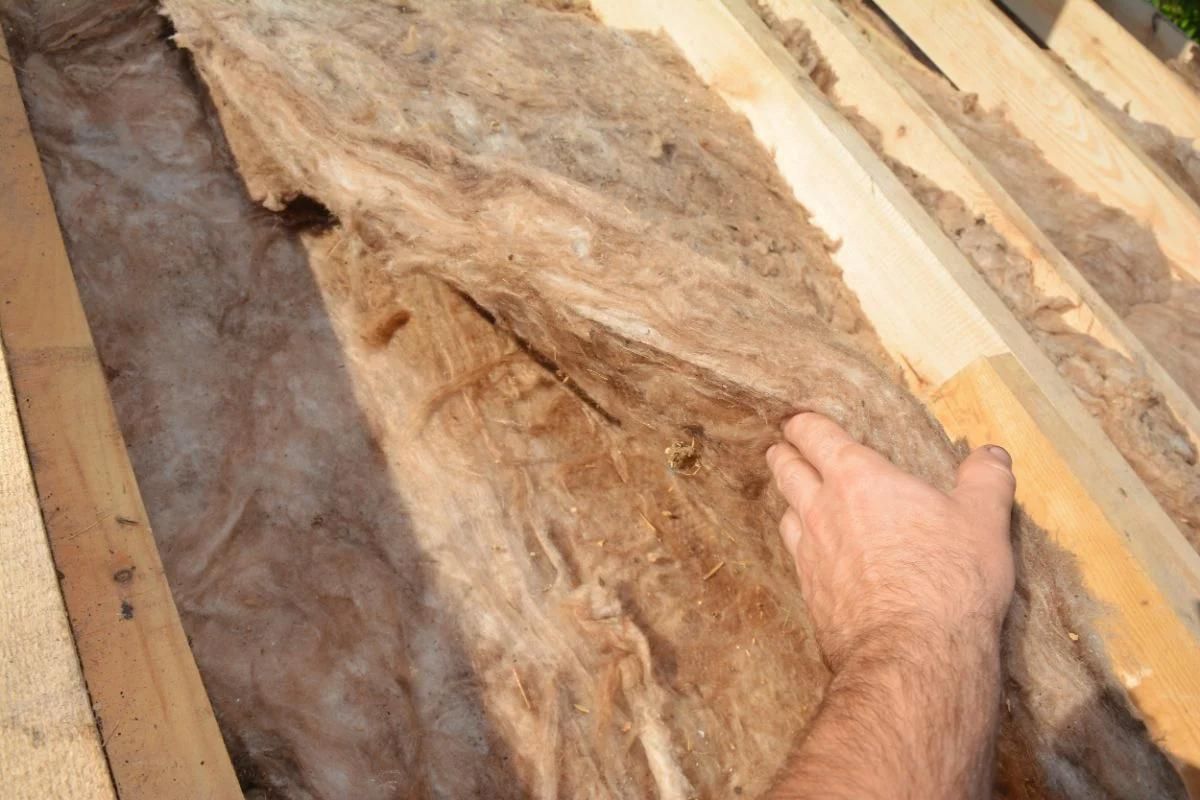
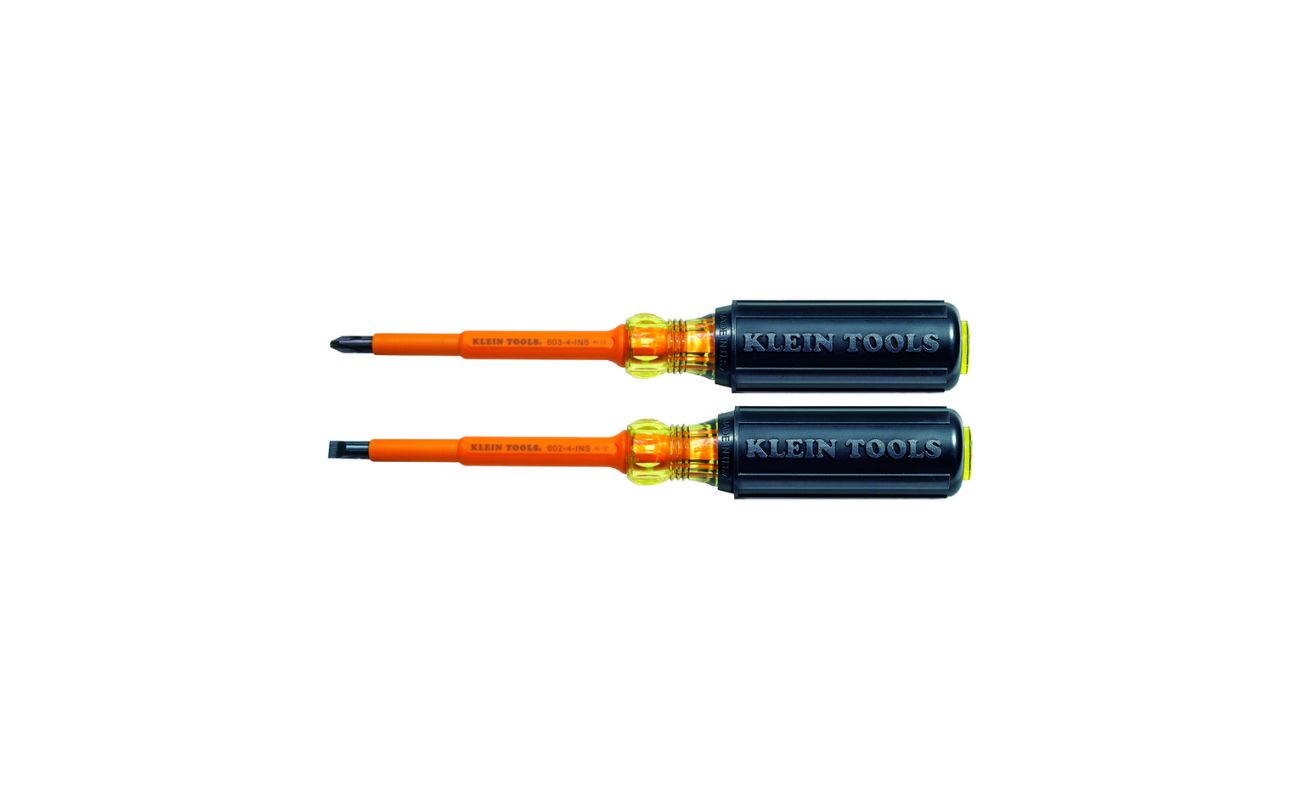
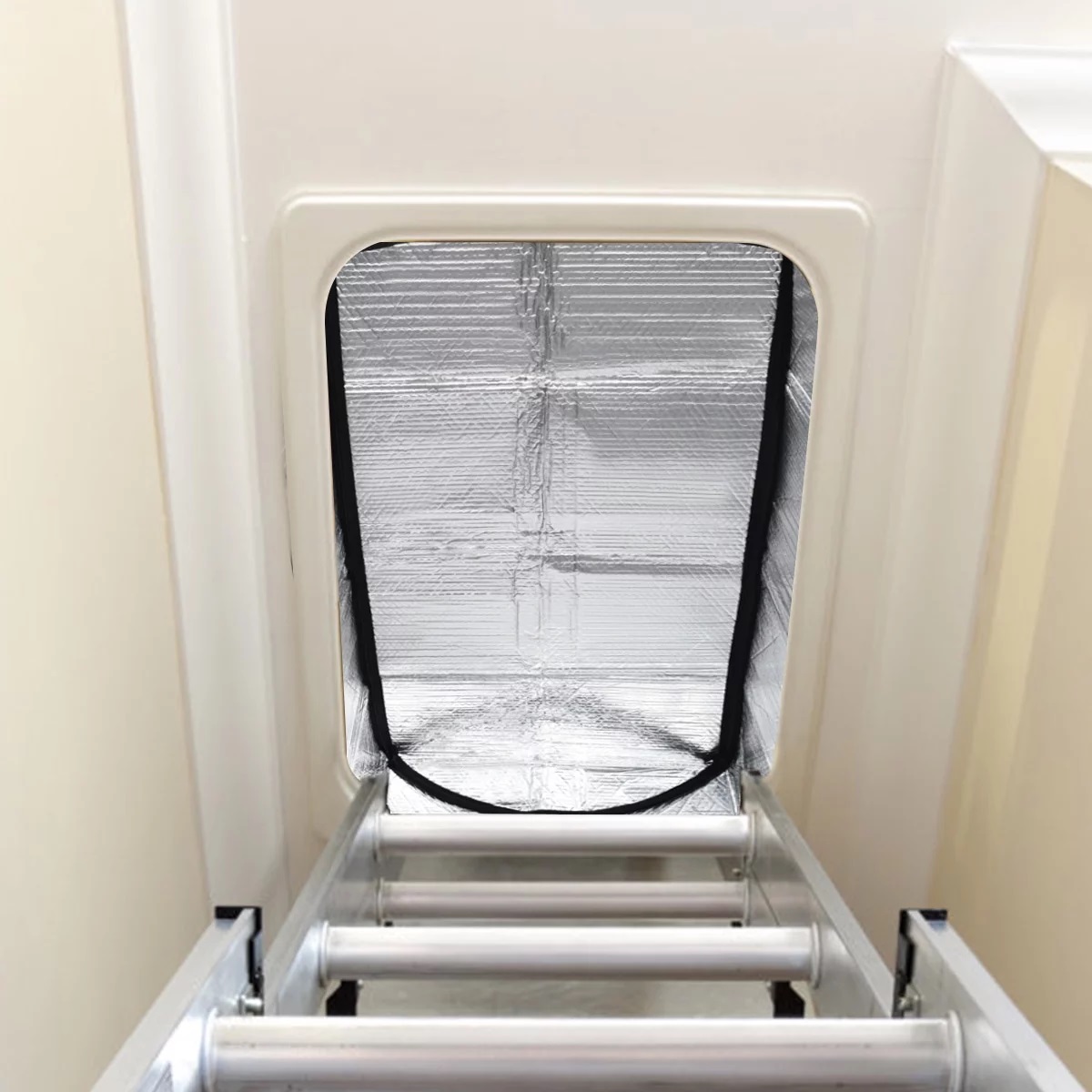
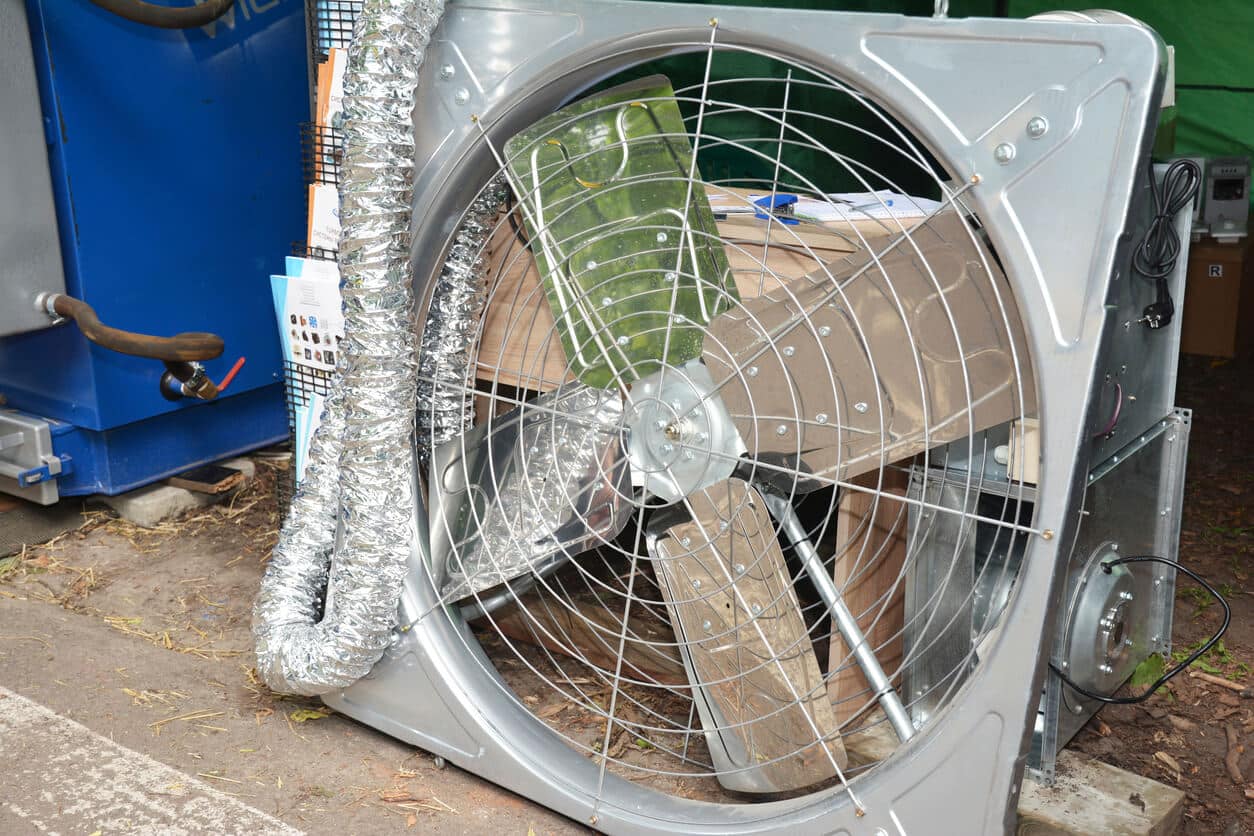
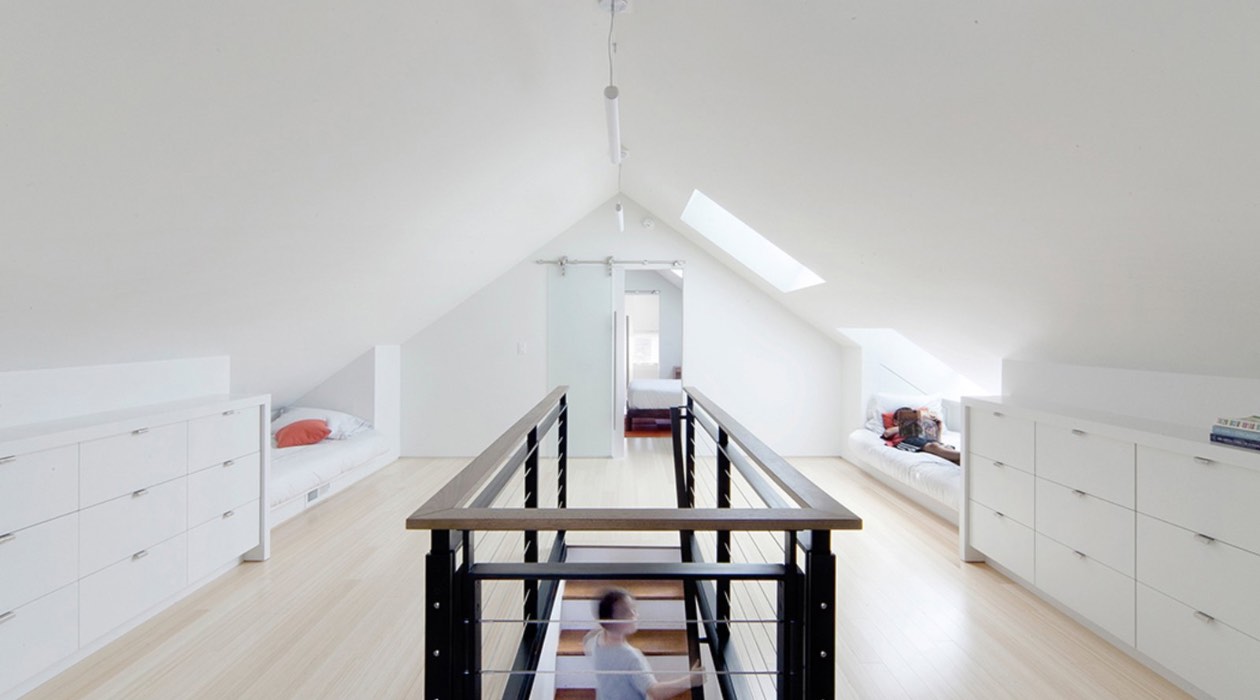
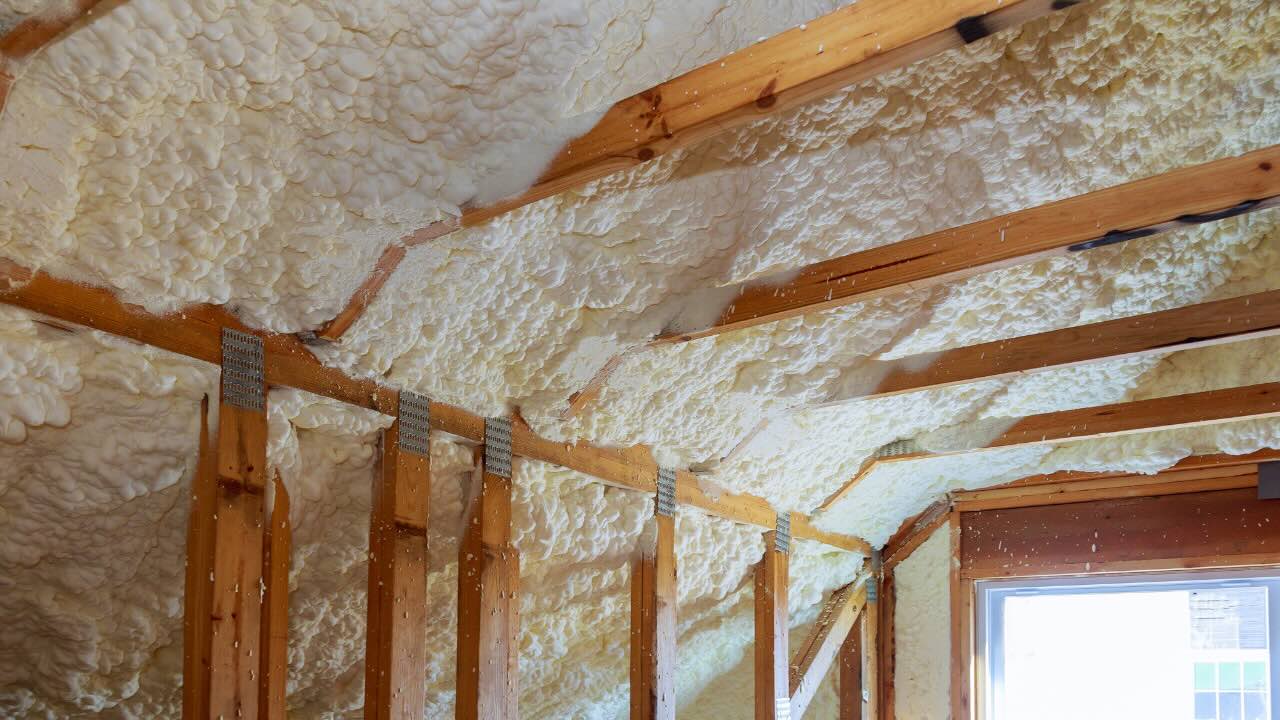
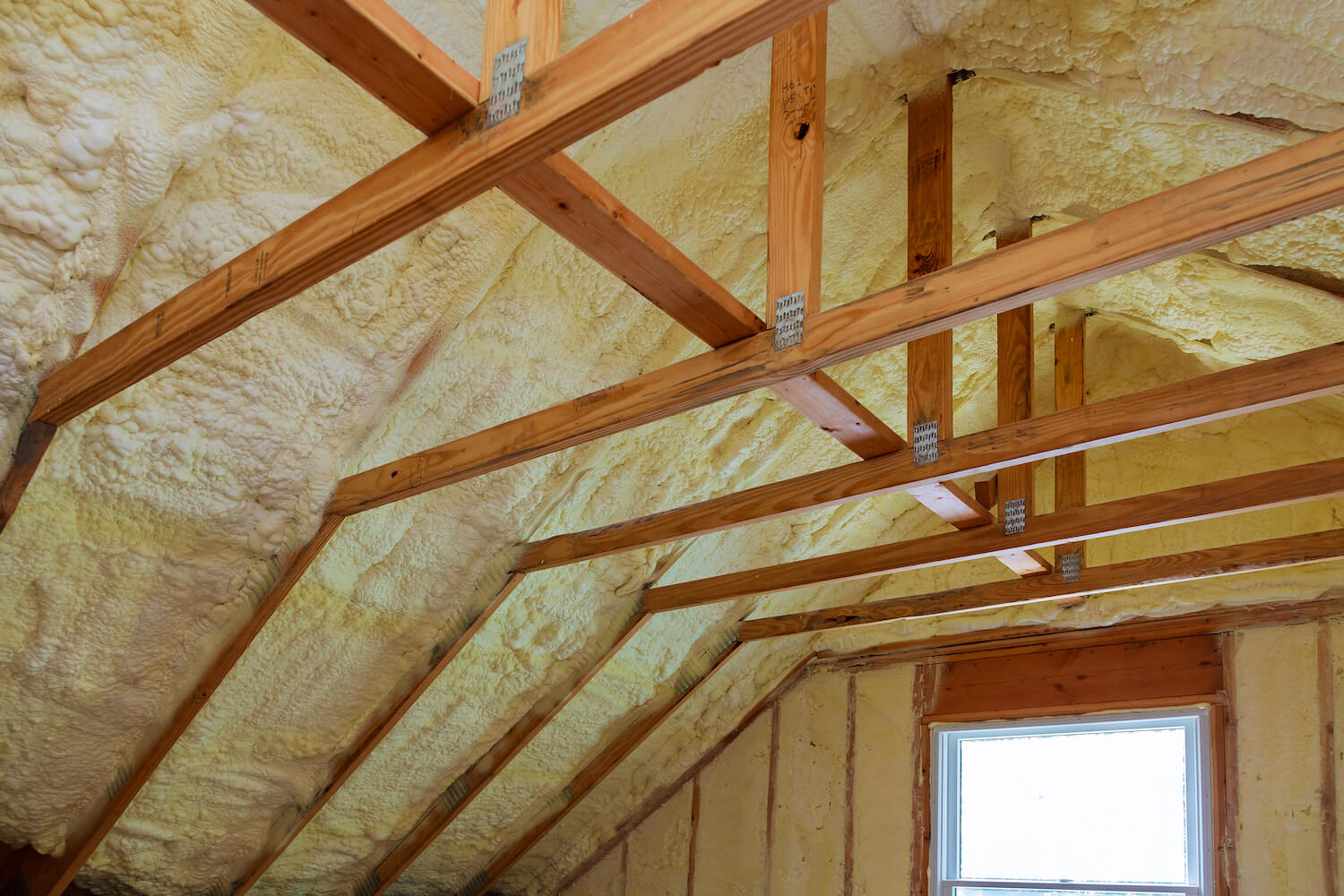
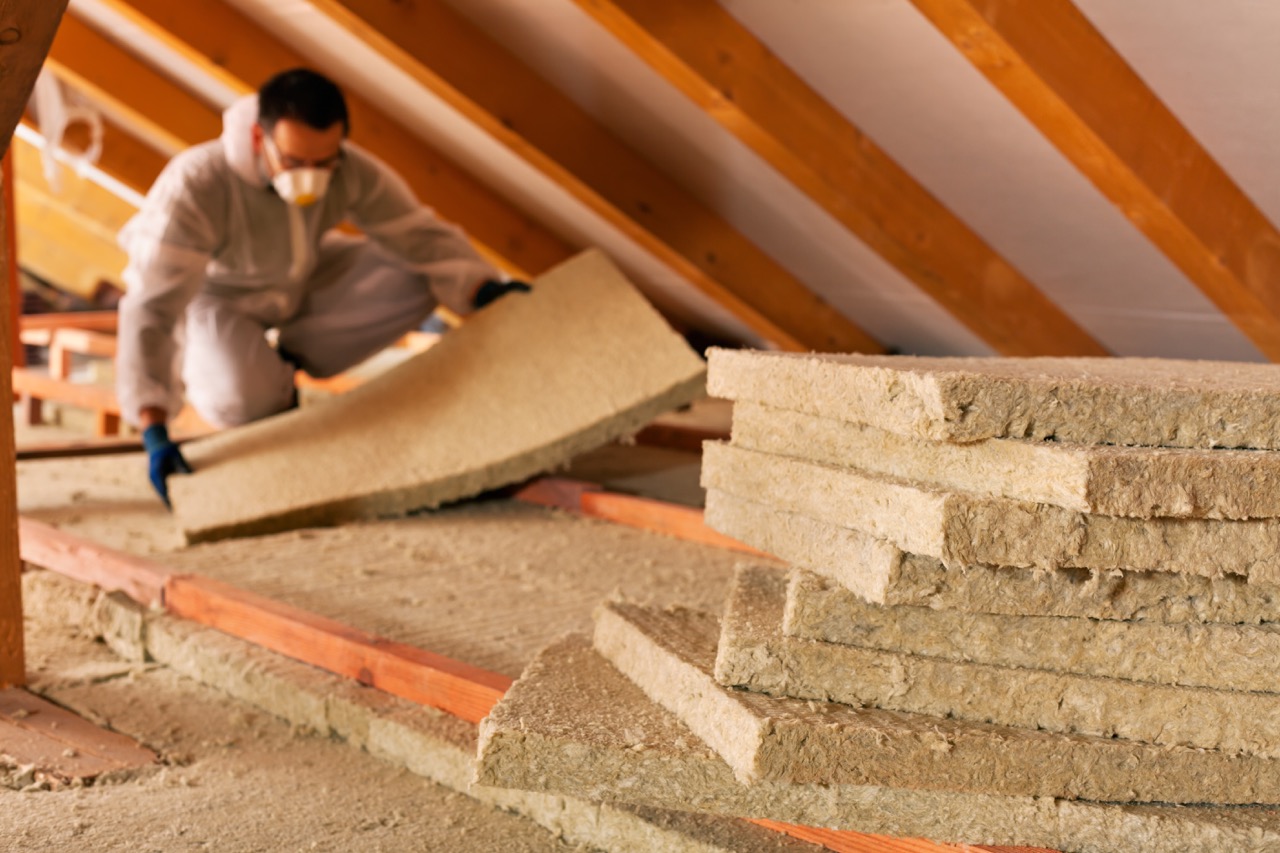
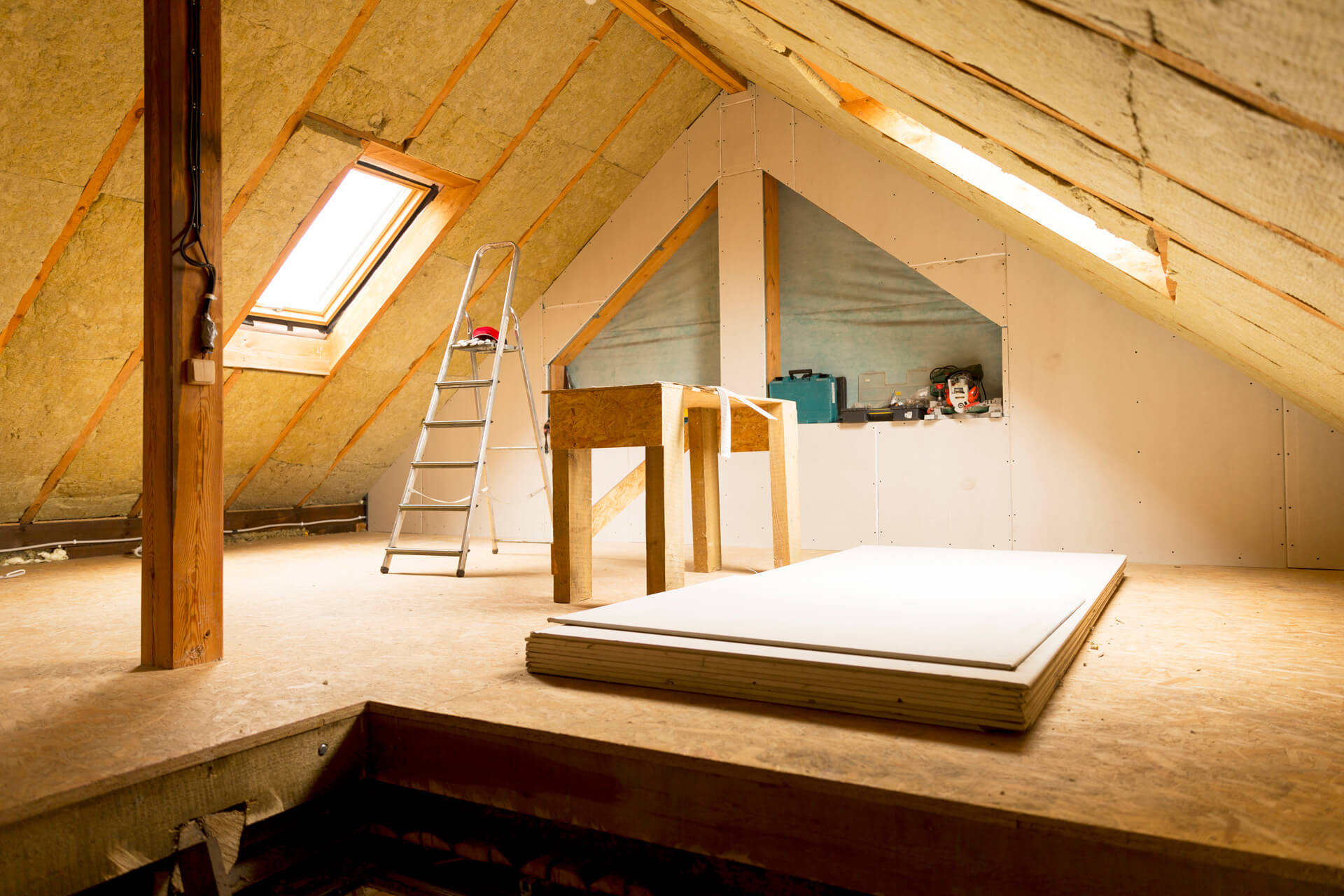
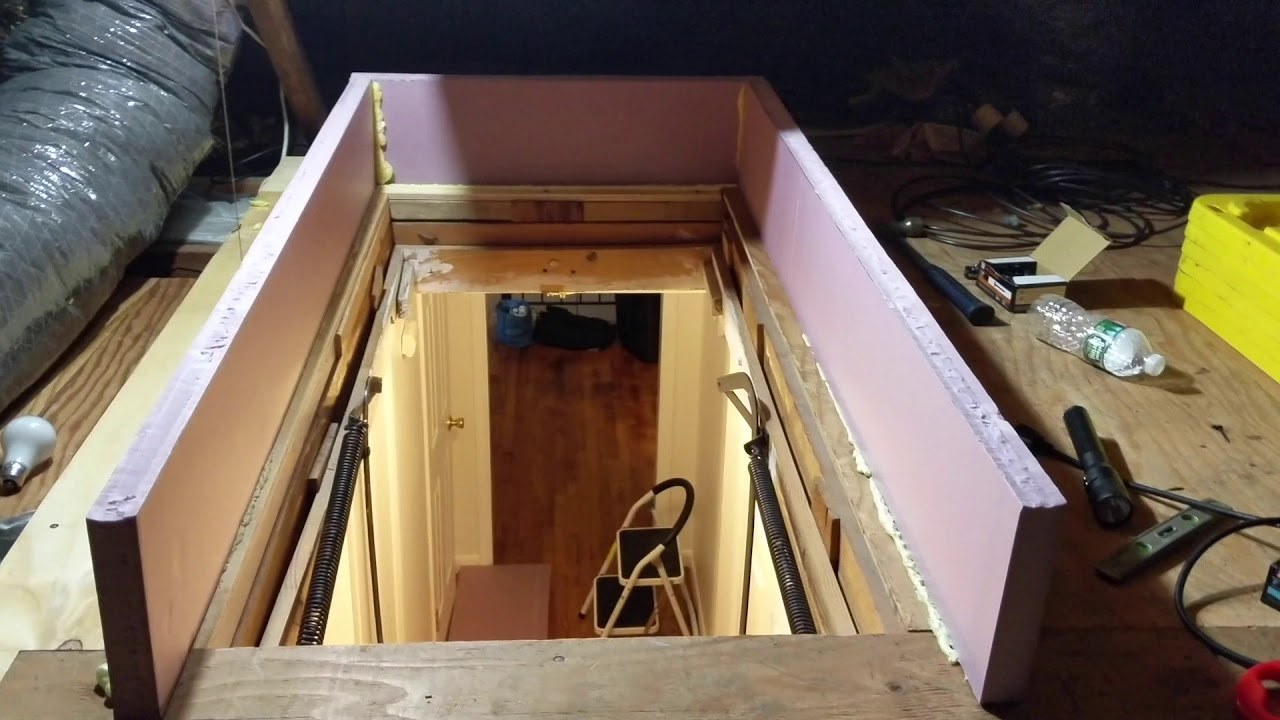
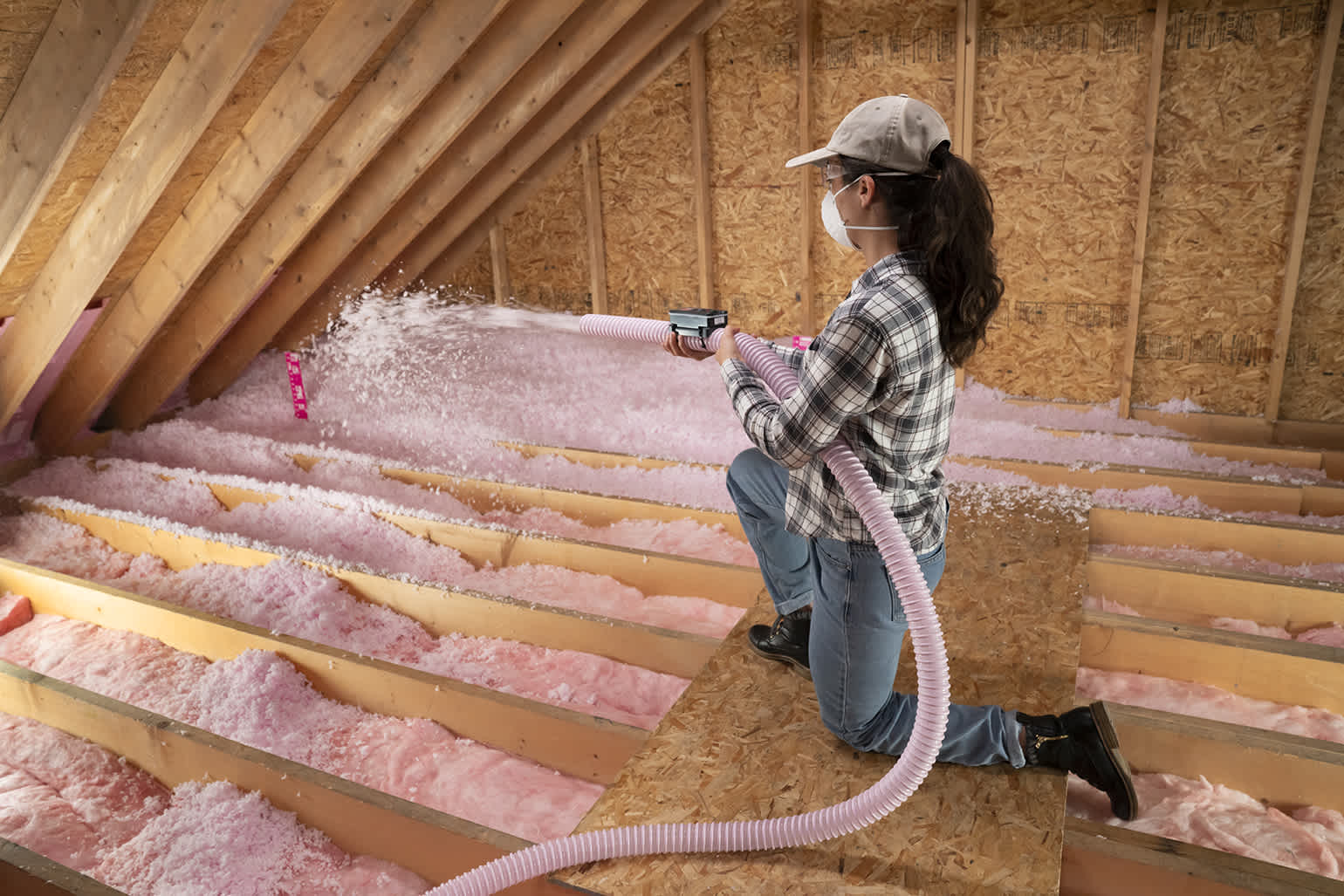
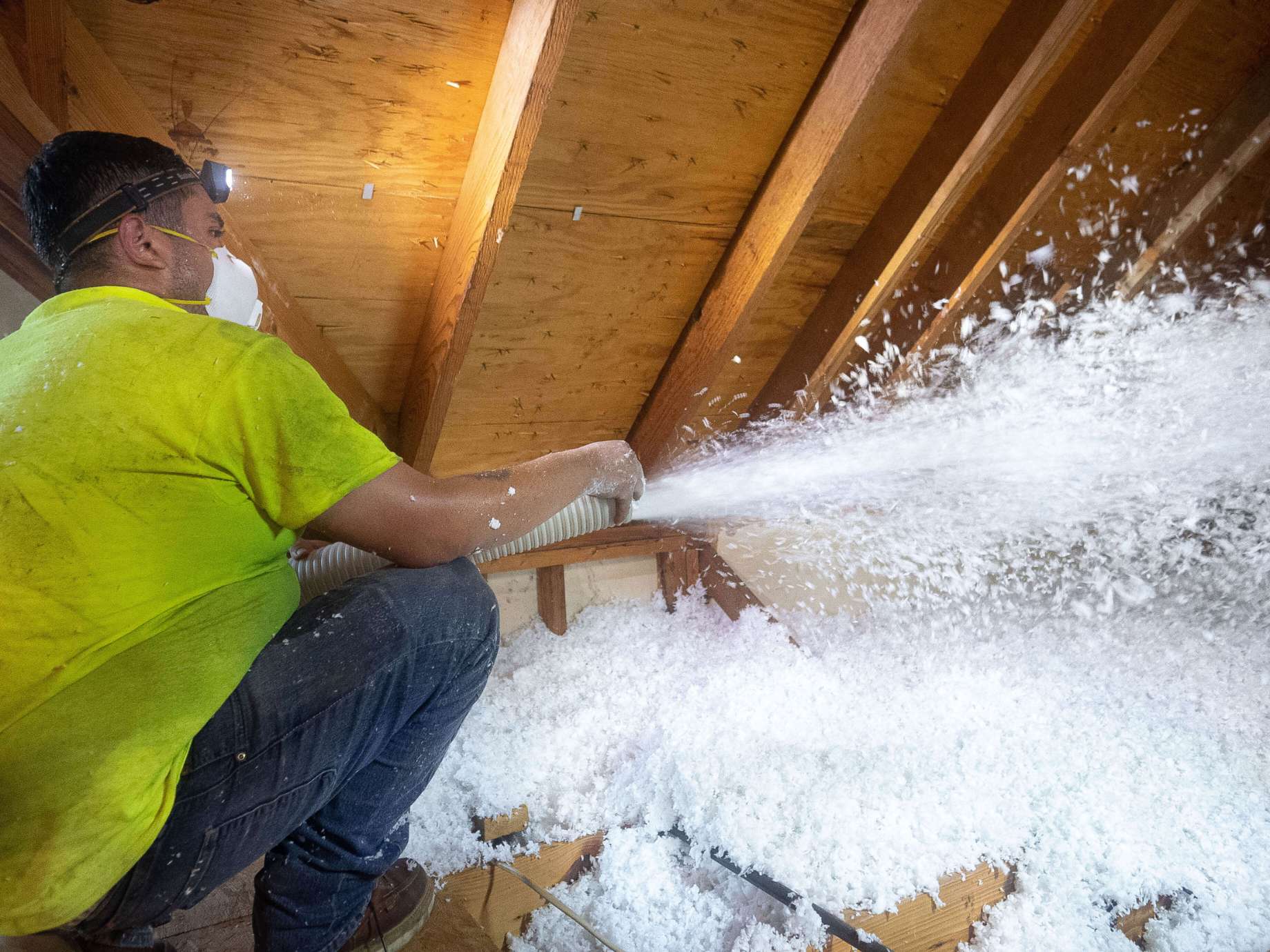
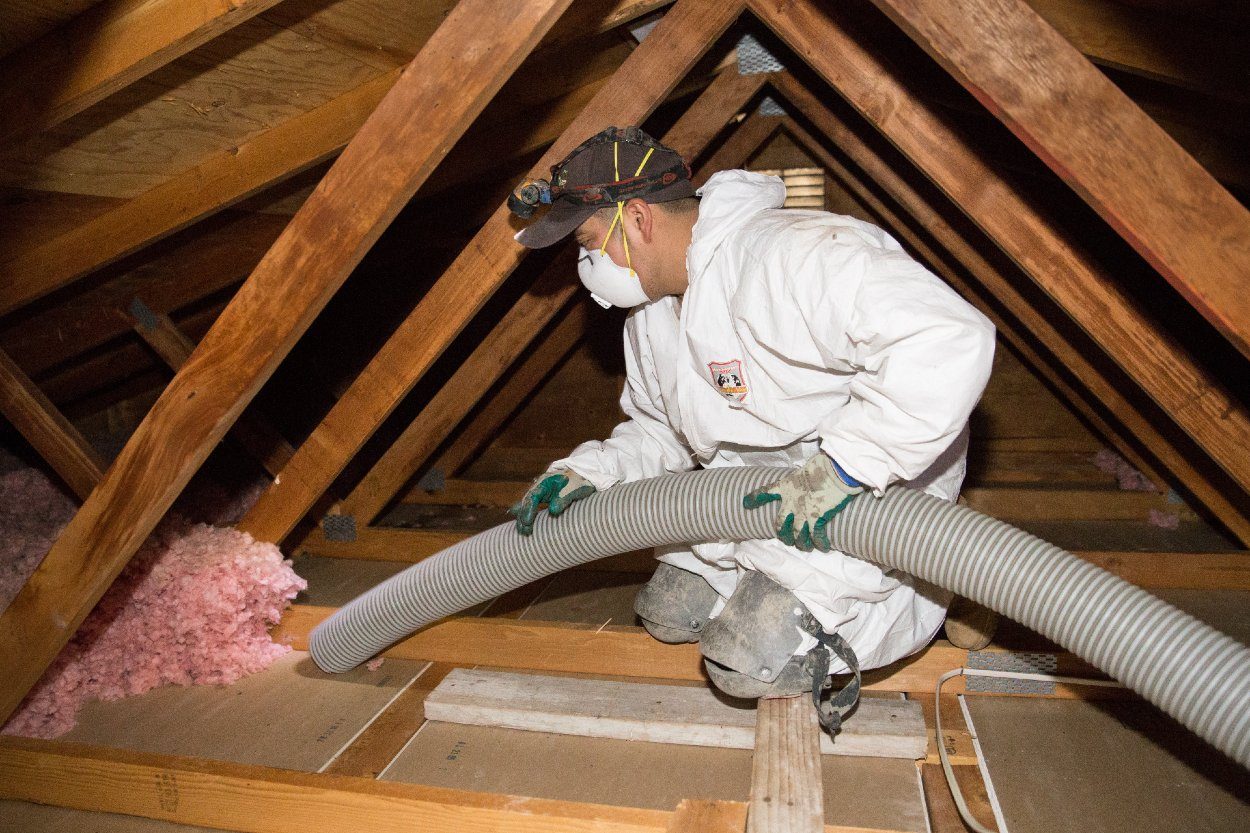

0 thoughts on “How To Tell If An Attic Is Properly Insulated”